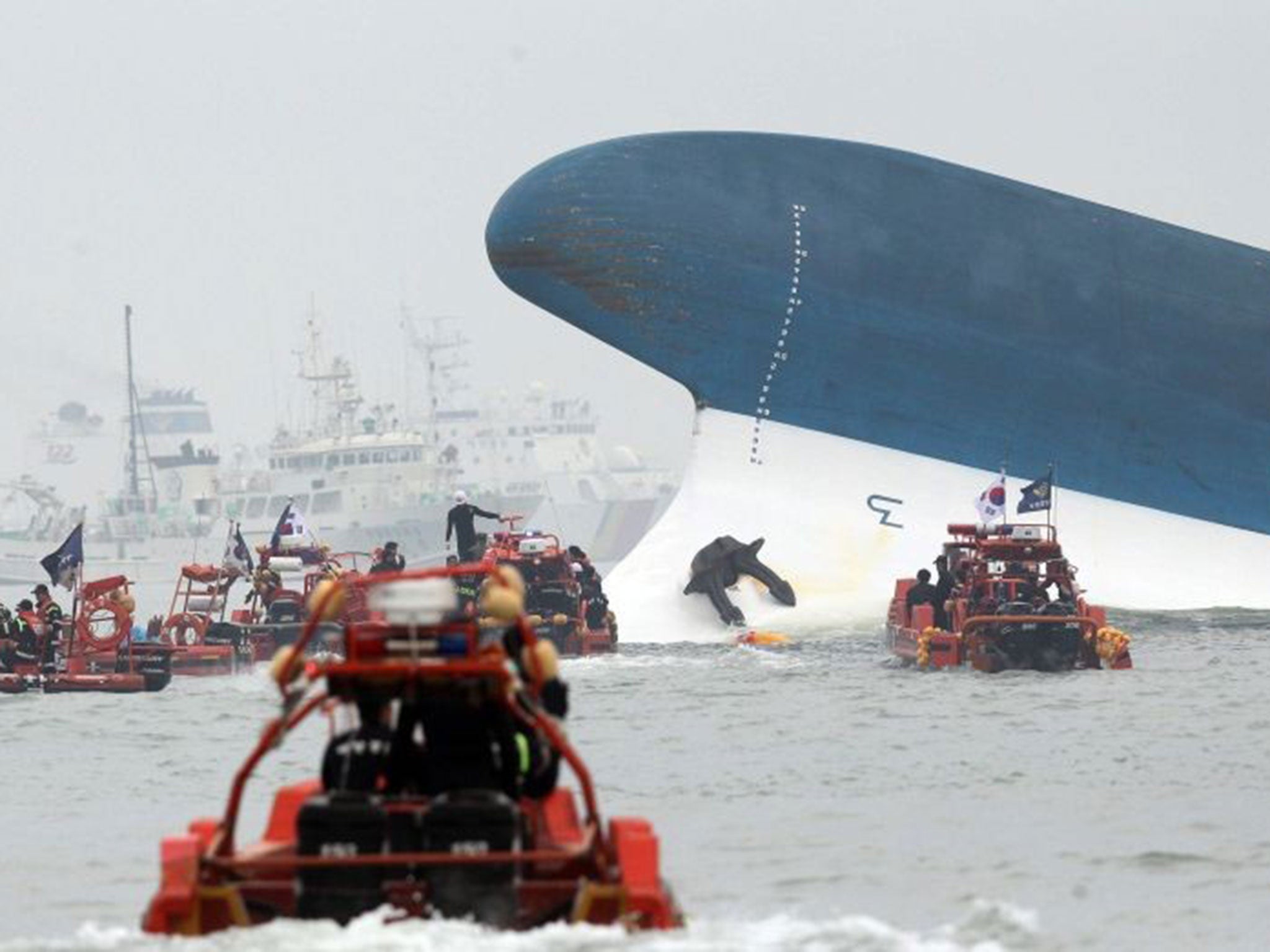Simon Calder: Until this disaster South Korea's ferry safety record fared well compared to its Asian neighbours
Death tolls are typically high on Asian ferries, but the peninsular nation had developed an efficient system

Your support helps us to tell the story
From reproductive rights to climate change to Big Tech, The Independent is on the ground when the story is developing. Whether it's investigating the financials of Elon Musk's pro-Trump PAC or producing our latest documentary, 'The A Word', which shines a light on the American women fighting for reproductive rights, we know how important it is to parse out the facts from the messaging.
At such a critical moment in US history, we need reporters on the ground. Your donation allows us to keep sending journalists to speak to both sides of the story.
The Independent is trusted by Americans across the entire political spectrum. And unlike many other quality news outlets, we choose not to lock Americans out of our reporting and analysis with paywalls. We believe quality journalism should be available to everyone, paid for by those who can afford it.
Your support makes all the difference.Worldwide, far more passengers die on ferries than on aircraft. The toll is particularly high in Asia, due to a lethal combination of high population, a multiplicity of sea and river routes and, on many routes, dubious safety standards.
The London-based International Maritime Organization (IMO) has become increasingly concerned about what it calls “the unacceptable loss of lives” on domestic ferries in Asia. To try to reduce the death toll, the IMO has convened a series of meetings – most recently in the Chinese city of Nanjing last October.
Delegates from 16 countries, including both Koreas, agreed to “ promote a safety culture” and “introduce a system of rewards and sanctions to encourage compliance with ferry safety rules and regulations”.
Yet just three weeks later, an overcrowded domestic ferry in the Gulf of Thailand capsized and sank with the loss of three lives. In January this year, at least a dozen people died when an Indonesian car ferry from the island of Lombok sank.
Compared with some other Asian countries, South Korea has until now enjoyed a good safety record for passenger shipping. As a peninsular nation whose only land frontier is sealed, it is effectively an island. Accordingly, like Britain, South Korea has a wide range of international and domestic ferries. There are links to Russia, Japan and China, but the main focus of the ferry business is serving the holiday island of Jeju, the intended destination of the stricken vessel Sewol.
The beaches, mountains and gardens of Jeju provide a tranquil escape from the high-pressure cities in which most Koreans live. The island is also prime territory for honeymooners.
Many visitors fly, making Seoul to Jeju the busiest air route in the world. But the ferries provide plenty of cut-price competition. Chonghaejin Marine, the operator of the Sewol, has six overnight ferries each week between Incheon and Jeju, scheduled to take 13 hours. Many more ferries sail from other ports, including Korea’s second city, Busan.
Standards on board tend to be rudimentary. While private cabins are available on some ships, most travellers sleep on the floor in large, open lounges.
Join our commenting forum
Join thought-provoking conversations, follow other Independent readers and see their replies
Comments